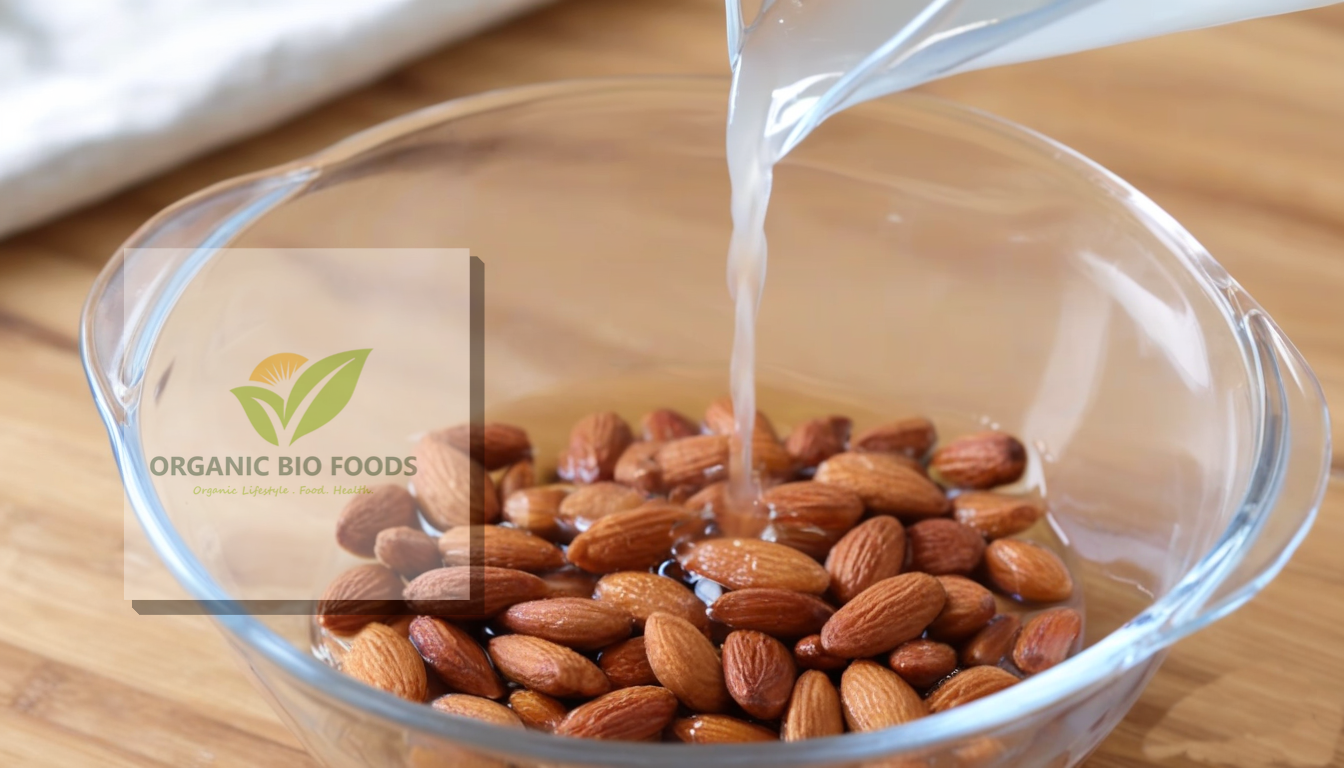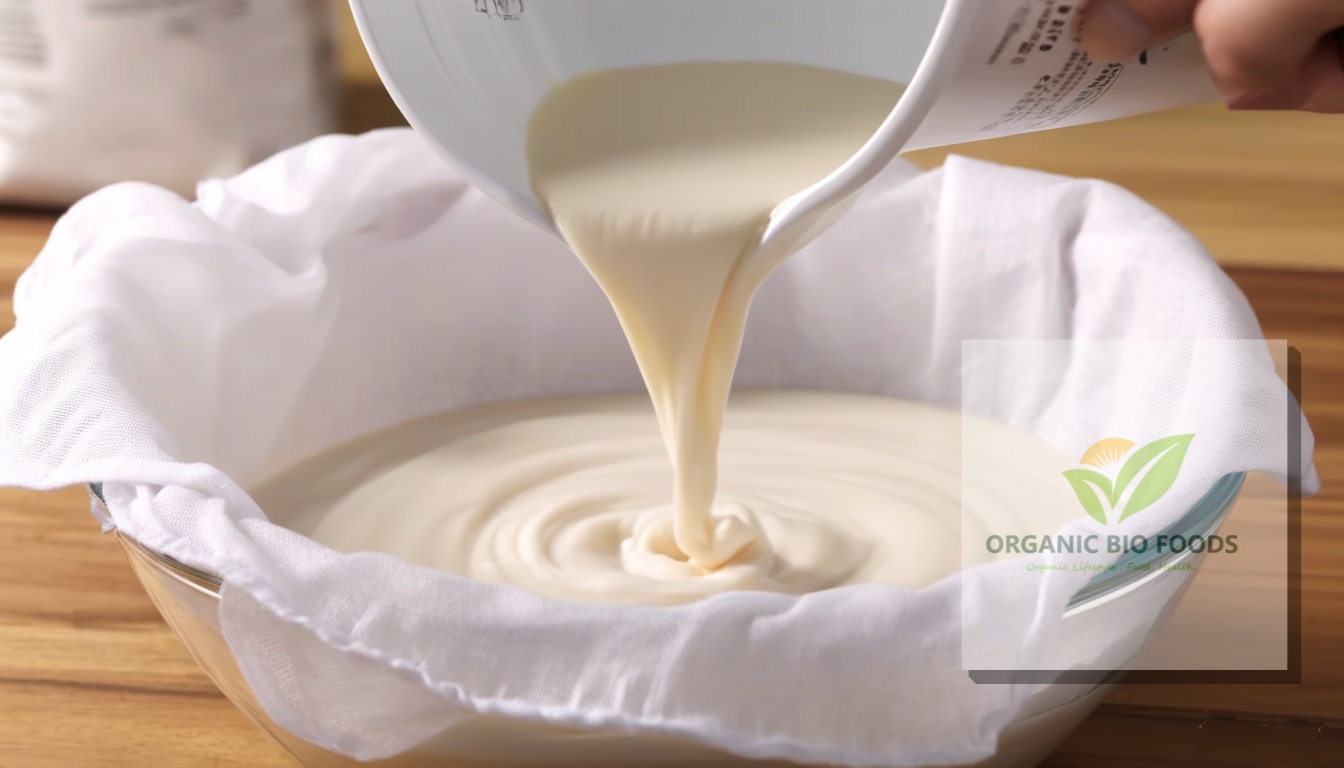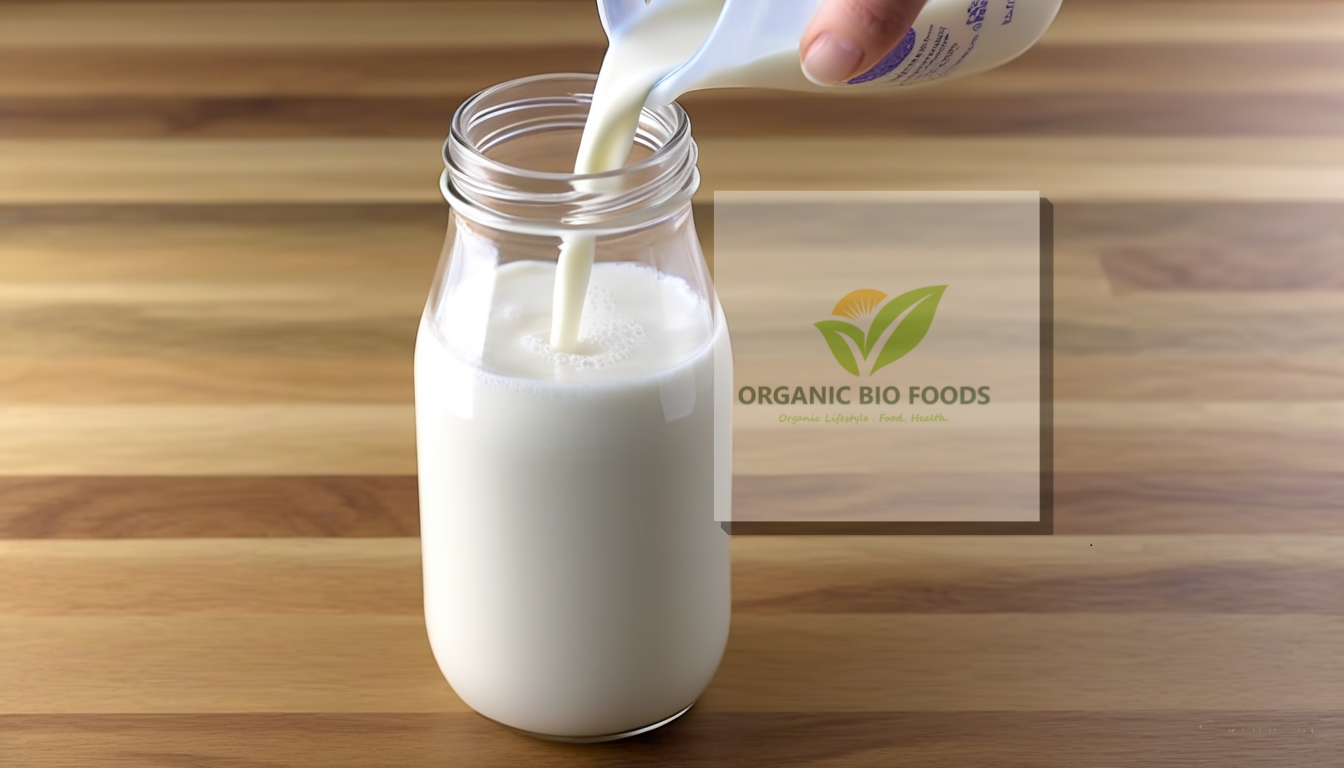Making your own organic almond milk at home is super easy, and it tastes way better than store-bought! Plus, you’ll know exactly what’s in it—no preservatives or added sugars. Let’s walk you through a simple and fun way to make delicious almond milk right in your kitchen.
What You’ll Need:
- A blender
- A nut milk bag or a clean cloth (for straining)
- 1-2 teaspoons of vanilla extract (optional for flavor)
- A pinch of sea salt
- 1 cup of organic almonds
- 4 cups of filtered water
- A bowl or large jar to store the almond milk
Step 1: Soak the Almonds

Start by soaking 1 cup of organic almonds in water. Fill a bowl with water and cover the almonds completely. Let them soak overnight or for at least 8-12 hours. Soaking the almonds softens them, which makes blending easier and helps release all the nutrients.
Pro Tip: The longer you soak, the creamier your almond milk will be!
Step 2: Drain and Rinse

After the almonds have soaked, drain the water and rinse them well under cold water. The almonds will feel plump and softer now, and they’re ready to go into the blender!
Step 3: Blend with Fresh Water

Put your soaked almonds in the blender and add 4 cups of fresh filtered water. Blend the mixture on high for about 1-2 minutes until the almonds are completely broken down and the water turns a creamy, white color.
Optional Flavor Boost: If you want to add some sweetness or flavor, toss in 1-2 teaspoons of vanilla extract or even a few pitted dates for natural sweetness.
Step 4: Strain the Almond Milk

Now that your almond mixture is blended, it’s time to strain it. Place a nut milk bag or a clean cloth (like cheesecloth) over a large bowl or jar. Pour the almond mixture through the cloth, letting the liquid drain into the bowl. Squeeze and press the cloth to get all the almond milk out.
You’ll be left with almond pulp in the cloth, which you can save for baking or smoothies!
Step 5: Add a Pinch of Salt (Optional)

To enhance the flavor of your almond milk, stir in a pinch of sea salt. It balances out the natural flavors and gives it a smoother taste.
Step 6: Store and Enjoy

Pour your fresh almond milk into a glass jar or bottle and store it in the fridge. It will stay fresh for up to 4-5 days. Before each use, give it a good shake since it might separate naturally.
Fun Fact: Homemade almond milk is free from preservatives and chemicals that store-bought brands often contain, making it healthier for you!
Tips for Leftover Almond Pulp
Don’t throw away that leftover almond pulp! Here are some creative ways to use it:
- Baking: Leftover Almond Pulps can be used for baking. Add it to muffin or bread recipes.
- Smoothies: Leftover Almond Pulp can also be used for smoothies, blend it into smoothies for extra fiber.
- Granola: You can also Mix Leftover Almond Pulp into homemade granola or oatmeal.
So Why Go Make Your Own Almond Milk? You May Ask
Making your own organic almond milk at home is not only healthier, but it’s also cheaper in the long run. Plus, you can customize it to your taste—sweeten it, flavor it, or keep it simple. Also the quality of Nuts and process is one that you are certain off. Once you try this homemade version, you’ll never want to go back to store-bought almond milk again!
Now that you know how easy it is, give it a try and enjoy your fresh, creamy, and nutritious almond milk!








